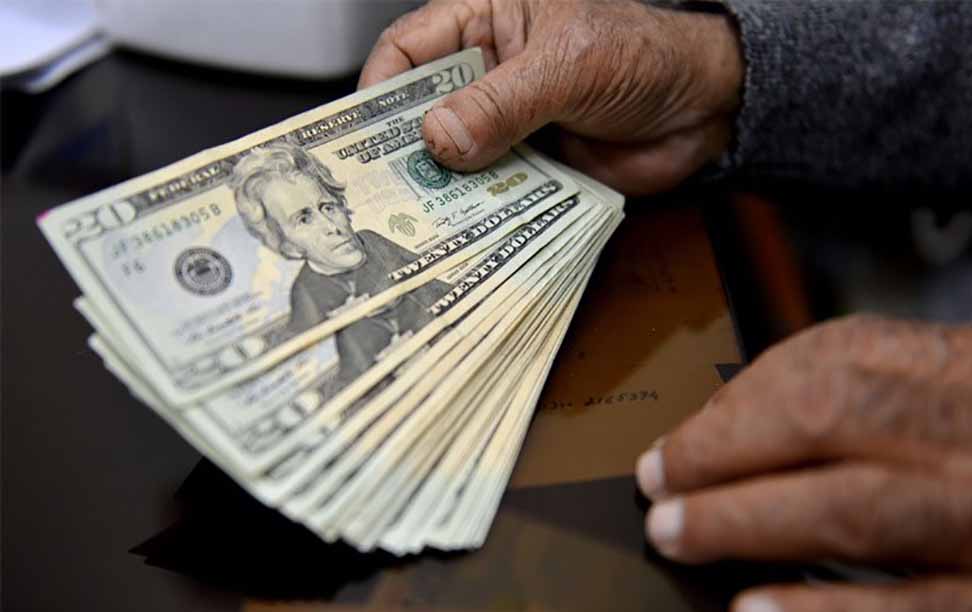August 03, 2023 (MLN): There has been increasing talk of the BRICS nations, which include Brazil, Russia, India, China, and South Africa, of developing a new currency to rival the U.S. dollar.
This month, the leaders of BRICS will meet in South Africa, and most were speculating that the new currency was the main agenda for this meeting.
However, India has made a big declaration amid this speculation of a new BRICS currency.
India's external affairs minister, S. Jaishankar, said there are no plans for a new BRICS currency and that the focus is on strengthening the national currency.
Still, this confirms that BRICS is considering alternatives to the dollar-dominated payment system.
Some reports state that 41 countries are even in favor of a separate BRICS currency.
On the other hand, India wants the rupee (INR) to get stronger amid de-dollarization.
Is the U.S. Dollar dominance coming to an end?
Central banks are already stockpiling gold reserves, and there is a declining share of U.S. dollars held by central banks.
| Country | FX Reserves | Total Reserves | Gold Reserves Tonnes | Gold Reserves Millions | Holdings % |
|---|---|---|---|---|---|
| China | 3,254,813.00 | 3,384,750.39 | 2,113.46 | 129,937.39 | 3.84 |
| India | 551,219.00 | 600,246.21 | 797.44 | 49,027.21 | 8.17 |
| Russian Federation | 439,325.18 | 582,552.70 | 2,329.63 | 143,227.53 | 24.59 |
| Brazil | 335,621.09 | 343,592.23 | 129.65 | 7,971.14 | 2.32 |
| South Africa | 53,868.92 | 61,579.11 | 125.41 | 7,710.19 | 12.52 |
Source: World Gold Council
BRICS nations now account for more than 40% of the world’s population and have an aggregated global GDP of 32.12%.
This surpasses the G7’s (United States, Canada, France, Germany, Italy, Japan, and the United Kingdom) GDP of 29.89%.
GDP based on PPP, share of world (Percent of World)
Source: International Monetary Fund (IMF)
Additionally, a total of 22 countries have now opened bank accounts in India and will begin to settle global trade in the INR.
These countries include Bangladesh, Belarus, Botswana, Fiji, Germany, Guyana, Israel, Kazakhstan, Kenya, Malaysia, Maldives, Mauritius, Myanmar, New Zealand, Oman, Russia, Seychelles, Singapore, Sri Lanka, Tanzania, Uganda, and the United Kingdom.
India’s Union Minister of State Rajkumar Ranjan Singh said in a statement, “Government is engaged with the Indian trading community including the Small and Medium Enterprises (SMEs) to simplify the administrative procedures to implement this mechanism.”
In 2021, Saudi Arabia and Russia signed a military cooperation agreement. The United States was no longer the sole protector of the Saudi Kingdom.
In August 2021, Saudi Arabia and Russia signed an agreement aimed at developing areas of joint military cooperation between the two countries.
In January 2023, Saudi Arabia’s Finance Minister Mohammed Al-Jadaan Saudi Arabia announced that the country is open to trade in currencies other than the US dollar, something they have not done in nearly 50 years.
This indicates that the world’s largest oil exporter, which has maintained a currency peg to the dollar for decades, is seeking to strengthen its relations with crucial trade partners including China.
Saudi Arabia is a pillar of a petrodollar system established in the 1970s that relies on pricing crude exports in the US currency.
During President Xi Jinping’s visit to Riyadh last year, President Xi said that China would make efforts to buy more oil from the Middle East and also wanted to settle that trade in the yuan.
During the 2022 BRICS summit, Russian President Vladimir Putin announced that the bloc was working to create an “international reserve currency”.
The signals of de-dollarisation are emerging.
Why De-dollarization?
Growing pressure for a new global currency comes after the continued weaponization of the U.S. dollar in the form of sanctions and trade wars.
De-dollarization gained momentum since Russia's invasion of Ukraine in early 2022.
The U.S. in the past, has used its control over the dollar to freeze half of Russia's foreign currency reserves and cut off its largest banks from the SWIFT international payments system after the war erupted.
Copyright Mettis Link News
Posted on: 2023-08-03T13:15:07+05:00









